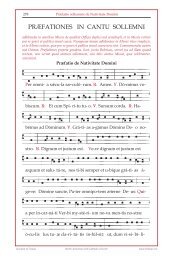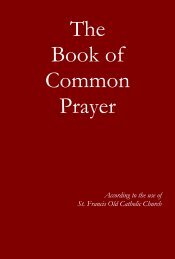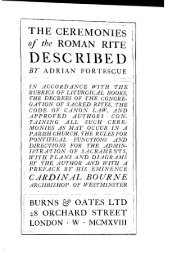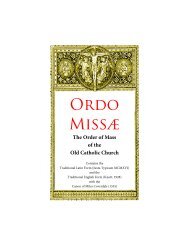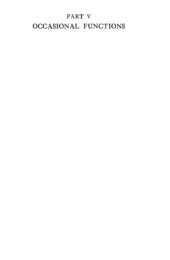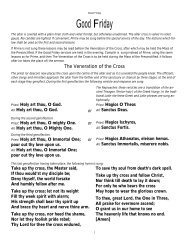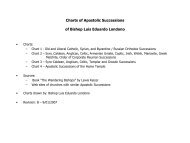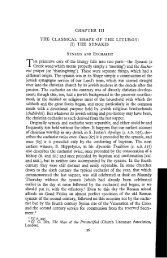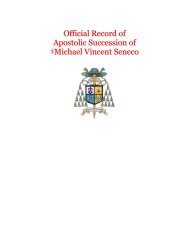Eucharist and Lord's Supper
Eucharist and Lord's Supper
Eucharist and Lord's Supper
Create successful ePaper yourself
Turn your PDF publications into a flip-book with our unique Google optimized e-Paper software.
THE SHAPE OF THE LITURGY<br />
At the end of the second century wefi.nd twoseparate institutions, already<br />
traditionally called 'the eucharist' <strong>and</strong> 'the agape' or '<strong>Lord's</strong> supper',<br />
existing side by side in the same churches, celebrated under different circumstances,<br />
by different rules, for different purposes, at different times of<br />
the day. It is evident that though they are clearly distinguished, both are<br />
ultimately derived from the chabilrah supper; <strong>and</strong> it is, I think, also clear<br />
how their separation has been effected. The eucharist consists simply of<br />
those things in the chabztrah supper to which our Lord had attached a<br />
special new meaning with reference to Himself, extracted from the rest of<br />
the <strong>Lord's</strong> supper, to which no special christian meaning was attached.<br />
The agape is simply what remains of the chabilrah meal when the eucharist<br />
has been extracted. This appears when we examine their forms.<br />
The Primitive <strong>Eucharist</strong><br />
We have seen that the universal 'four-action shape' of the liturgical<br />
eucharist consists essentially of four parts: offertory, prayer, fraction <strong>and</strong><br />
communion.<br />
(I) The offertory. Each communicant brings for himself or herself a<br />
little bread <strong>and</strong> wine, <strong>and</strong> also very frequently, other small offerings in<br />
kind of different sorts, oil, cheese, vegetables, fruit, flowers, etc. l These<br />
latter were placed upon or beside the altar, where they were blessed in a<br />
special clause at the end of the eucharistic prayer-a clause which maintains<br />
its place at the end cfthe Roman canon to this day, the per Quem haec<br />
omnia. 2 This is simply a survival of the custom of providing the chabilrah<br />
supper out of the contributions in kind by its members, though in the case<br />
of the bread <strong>and</strong> wine another meaning was given to the offering by the<br />
church before the end of the first century.<br />
(2) The prayer. When the eucharist was extracted from the chaburah<br />
supper, the disappearance of the intervening meal brought the breaking of<br />
bread at its beginning <strong>and</strong> the Thanksgiving over the cup of blessing at its<br />
end into conjunction. The traditional brief jewish bread-blessing in itself<br />
had no special connection with the chabilrah meeting, but was simply the<br />
ordinary grace before all meals, with reference to the supper that followed.<br />
It consequently went along with the supper, <strong>and</strong> re-appears at the agape,<br />
not at the eucharist. The long Thanksgiving at the end of the meal was<br />
always regarded as <strong>and</strong> called in jewish practice'The Blessing' for all that<br />
had preceded it. It was also specifically the blessing for the 'cup of blessing'<br />
itself (which did not receive the ordinary wine-blessing). Accordingly<br />
it now becomes 'The Blessing' or 'The Prayer' of the eucharist, said over<br />
the bread <strong>and</strong> wine together.<br />
1 Hippolytus, Ap. Trad., v., vi., xxviii.<br />
, Cf. the place of the blessing of chrism etc. on Maundy Thursday, the blessings<br />
of grapes <strong>and</strong> so forth in the Leonine Sacramentary, <strong>and</strong> other surviving traces of<br />
the practice.



